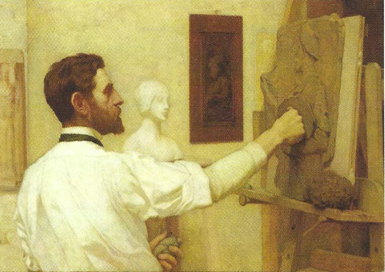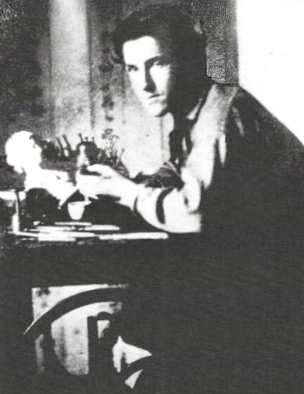Authors:
Historic Era: Era 6: The Development of the Industrial United States (1870-1900)
Historic Theme:
Subject:
Fall 2011 | Volume 61, Issue 2


Authors:
Historic Era: Era 6: The Development of the Industrial United States (1870-1900)
Historic Theme:
Subject:
Fall 2011 | Volume 61, Issue 2

AUGUSTUS SAINT-GAUDENS came to Paris for the first time in 1867, the year it seemed that the whole world came to Paris for the Exposition Universelle, the grand, gilded apogee of Second Empire exuberance. He arrived on an evening in February, by train after dark and apparently alone. He was 19 years old, a redheaded New York City boy, a shoemaker's son, who had been working since the age of 13. He was not one of the first ambitious young Americans to come to Paris following the Civil War. He was younger than most, however, and in background and in the future he had in store, he was like no one else. Until then, he had never been away from home.
The young man had more in mind than the exposition. He planned to enroll at the École des Beaux-Arts and remain in Paris as long as need be. Like young painter George Healymore than 30 years before, he had something he was determined to accomplish, and thus become accomplished himself. He considered himself bound to be a sculptor. That no American had ever been accepted as a student in sculpture at the École did not deter him. But first he needed a job. In his pocket he had $100 saved for him by his father from his own small wages.
ON HIS 13th birthday, Saint Gaudens's father had told him that he would need to work; the boy had therefore become the apprentice of cameo cutter Louis Avet. Cameos for men were much in style as scarf pins, with the heads of dogs, horses, and lions—lion heads were especially in demand—cut from amethyst and other stones. Gus worked 10-hour days and spent the first part of his apprenticeship polishing the backgrounds of stone cameos cut by his master, but was soon allowed to do more, including custom colored cameo portraits on conch shells.
The art of cutting cameos was a species of sculpture rather than engraving. The artisan worked at a small bench with a multitude of steel engraving tools, or burins, with different-shaped points, these powered by a foot pedal that the cutter pumped as one did a sewing machine. The piece of stone or shell was fixed with cement to a stick, to hold it fast while the cutter worked. His work on cameos led Gus to seek a career as a sculptor. Not only did he like giving physical dimension to a subject; he had come to appreciate the importance of faces.
His apprenticeship years were also the years of the Civil